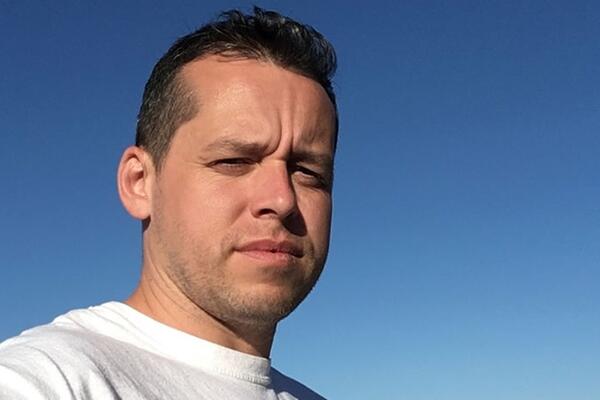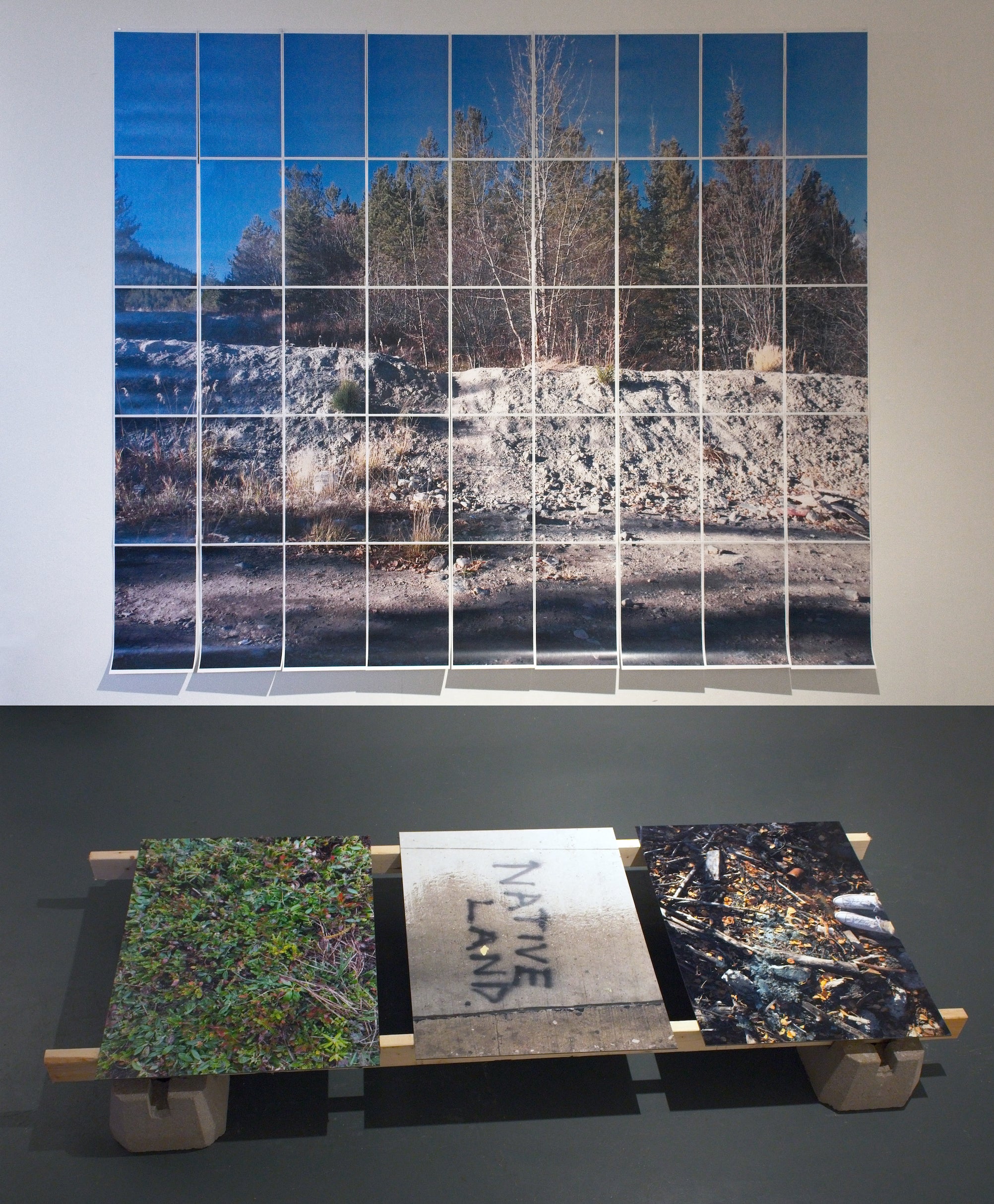
Making space for Indigenous artists to lead
Canada Research Chair dedicates project to redressing educational and leadership inequities

Canada Research Chair dedicates project to redressing educational and leadership inequities
By Wendy Philpott Faculty of ArtsLogan MacDonald wants to create more opportunities for Indigenous knowledge and leadership within institutions. As one of just a few Indigenous faculty members at the University of Waterloo, the Studio Arts professor’s commitment to Indigenization will play an important part in the University’s actions toward reconciliation.
 A visual artist, curator and educator, MacDonald is nationally recognized for his work that focuses on Indigenous, disability and queer perspectives. He joined Waterloo’s Department of Fine Arts in 2019 and was named Canada Research Chair (CRC) in Indigenous art in 2020, a position he is dedicating to redressing educational and leadership inequities within the field of Fine Arts.
A visual artist, curator and educator, MacDonald is nationally recognized for his work that focuses on Indigenous, disability and queer perspectives. He joined Waterloo’s Department of Fine Arts in 2019 and was named Canada Research Chair (CRC) in Indigenous art in 2020, a position he is dedicating to redressing educational and leadership inequities within the field of Fine Arts.
“Curriculum and institutional systems of accreditation are Eurocentric and exclusionary to many Indigenous peoples,” says MacDonald. “So my primary goal is to create sustainable pathways that enable Indigenous knowledge and cultural practices to broadly permeate studio art learning and how they lead to professionalization.”
MacDonald’s CRC research is informed by both his education — he holds a BFA in Interdisciplinary Studies from Concordia University and an MFA in Studio Arts from York University — and his art practice that explores notions of access, belonging and membership as central principles that hold personal relevance. In particular, his work considers what it means to be someone with Indigenous heritage who did not grow up on reserve nor currently live in close proximity to his cultural community.
“I have mixed Mi’kmaq, Scottish, Irish heritage,” he says. “My background has been mainly settler while the Mi’kmaq community I am connected to has experienced a great deal of cultural erasure.”
Born on Prince Edward Island, MacDonald grew up across Canada following his father’s career. His Mi’kmaq ancestry is connected to the people of Elmastukwek in Ktaqmkuk territory (also known as Bay of Islands, Newfoundland) through his mother, where he is part of the Qalipu First Nation.
Despite his mixed cultural heritage, MacDonald is acutely aware of the the barriers to success that Indigenous artists and others face. He points directly to the 400-year history of colonization that has led to loss of land, language and culture, including residential schooling, the 60s scoop, and potlach bans on cultural expression and ceremony. “The list of barriers and injury resulting from being colonized is endless. If people don’t see the inequities, they’re just not looking.”
MacDonald’s recent exhibitions in galleries across Canada are installations that invite viewers to experience the work from both Indigenous and settler perspectives.

The Lay of Land (2017-18, above) was based on a cross-country search for connection to the land and building solidarity around Indigenous resistance.

Bæōdut / Hidden Histories (2019, above) critically examines how Indigenous artifacts are held and defined within institutions. And Visiting (2019, top banner photo) explores the complex dynamics of community belonging through Indigenous/settler identity, cross-cultural exchange, and queerness. “My work is very much intersectional in thinking about the ways in which queer, Indigenous, disability perspectives all support each other in shared conversation.”
MacDonald’s CRC project is called The Longhouse Labs, which encompasses interconnected initiatives and resources including a studio-gallery space, a garden for land-based learning, annual visiting artist followships, and an archive. The project responds to the Truth and Reconciliation Commission’s calls to integrate Indigenous knowledge, perspectives, traditions and leadership broadly within education. Critical to its success, says MacDonald, is to develop the work collaboratively with a diverse intersectional and intergenerational group of Indigenous artists, creative knowledge-keepers, and community-driven creative practitioners.
“This is partly why the Longhouse Labs is important, because it reimagines what collaboration and community intersections can look like within an institutional setting. The project is about empowering and creating dedicated space for Indigenous-led experiences and learning.”
He articulates the particular obstacles facing Indigenous students of art that he wants to help dismantle: “At the university level, teaching studio arts and visual culture has traditionally relied upon a canon that makes Indigenous artistic creation seem marginal to the core knowledge and skills required to excel. Colonial education models inherently support systemic erasure of Indigenous knowledge, and this in turn erodes Indigenous student success rates, and impacts career paths, quality of life, and cultural health.”
As a teacher of Studio Arts, MacDonald says he strives to interrogate and revaluate traditional Eurocentric core curriculum approaches and terminology. “I try to filter these through an Indigenous lens with examples of ways of understanding core teachings.” It’s a strategy that he hopes will permeate art education for all the students.
The Longhouse Labs supports decolonization of curriculum with the Longhouse Fellows branch of the project. “It’s a collaborative step that creates new pathways to positions of leadership for Indigenous artists who may not necessarily have ‘traditional’ — that is, Eurocentric — educational backgrounds.”
Starting in 2022, MacDonald will annually welcome three Indigenous artists of different ages and backgrounds, to spend two terms on campus. Providing them with space and resources, the fellows will work with students while at the same time advance their own artistic practices and skills as leaders and mentors. “When we have our fellows in residence, faculty and students across campus will have opportunity to work with them, to learn from and be with them. It’s meant to be collaborative and open to all,” he says.
“I’m looking to highlight how Indigenous leaders bring valuable knowledge and practices that we can benefit from in ways that support meaningful reciprocity. And I see this as a way to validate non-Eurocentric positions within the university, while also help to empower the next generation of Indigenous artists.”

Read more
Savanah Seaton wants to help employers create workplaces where Indigenous employees can feel a sense of belonging and fully contribute their untapped knowledge, skills and abilities.

Read more
St. Paul’s University College rolls out training initiative for Indigenous students

Read more
Recognizing the inherent rights of water for global sustainability
The University of Waterloo acknowledges that much of our work takes place on the traditional territory of the Neutral, Anishinaabeg, and Haudenosaunee peoples. Our main campus is situated on the Haldimand Tract, the land granted to the Six Nations that includes six miles on each side of the Grand River. Our active work toward reconciliation takes place across our campuses through research, learning, teaching, and community building, and is co-ordinated within the Office of Indigenous Relations.